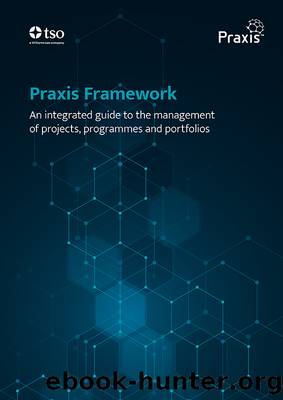Praxis Framework by Author

Author:Author
Language: eng
Format: epub
Publisher: The Stationery Office
During this formative period, information will be gathered for use in the brief and definition plan. This information will be diverse but it is too early to start building individual documents. It is useful for the manager to maintain a diary that is formally known as a daily log. This acts as a repository for information about assumptions, risks, issues, constraints etc., until more formal documentation is established.
Role descriptions for sponsorship and management should be assembled and agreed with the relevant individuals. It is important to confirm that they not only have the necessary competence but also are able to commit sufficient time to the identification process.
Review previous lessons
It is always important to learn from the past. The availability of documented lessons learned will depend upon the host organisationâs capability in knowledge management.
Where records of lessons learned are available, the initiation team should review them and identify those that are relevant to the new project or programme. These will be entered into a lessons log along with a description of how they affect the brief and definition plan.
If records are not available, it is still important for lessons to be gathered from previous projects or programmes. This may involve seeking out and interviewing sponsors and managers of previous projects and programmes or organising workshops.
External sources of lessons learned, such as other organisations or professional networks, should also be considered. If the host organisation has not done a project or programme like this one before this activity will rely on such external sources.
Prepare brief
Based on the confirmed mandate, the identification team will start work on the project or programme brief. The purpose of the brief is to provide sufficient information to justify investing in the definition process (the extent of which will be described in the definition plan). The exact content will vary in scope and detail according to circumstances and must be in proportion to the cost and risk of the proposed project or programme.
The key decision made during this process concerns how the work will be governed; i.e. will it be organised as a project or a programme? This is predominantly determined by the early stages of scope management, starting with the capture of requirements. The nature and complexity of the requirements, the scale and complexity of the solution, and the breadth of scope, will collectively indicate how the work should be managed. This decision will, in turn, influence the way that scope management, schedule management, risk management, etc. are covered in the brief.
The brief contains outline information about all of the components of the delivery function. The identification team will:
â work with stakeholders to establish their requirements
â develop a solution and scope of work
â determine whether to manage the work as a project or programme, or a hybrid of the two
â estimate high-level timescales
â identify sources of funding and estimate budgets
â identify and assess the main risks that could affect successful completion
â outline the type and quantity of resource that will be needed and whether it can be
Download
This site does not store any files on its server. We only index and link to content provided by other sites. Please contact the content providers to delete copyright contents if any and email us, we'll remove relevant links or contents immediately.
1,001 ASVAB Practice Questions For Dummies by Powers Rod(4045)
ASVAB For Dummies by Powers Rod(2465)
Police Exams Prep 2018-2019 by Kaplan Test Prep(2039)
Churchill by Paul Johnson(2016)
Wiley CPA Examination Review Focus Notes by Kevin Stevens(1617)
Wonder by R J Palacio(1609)
First Aid Handbook--Crucial Survival Skills, Emergency Procedures & Lifesaving Medical Information by Department of the Army(1508)
1936941139 (N) by Bob Rosenthal(1506)
A Very Stable Genius by Philip Rucker & Carol Leonnig(1339)
ASVAB AFQT For Dummies by Rod Powers(1322)
1,001 ASVAB AFQT Practice Questions For Dummies by Angie Papple Johnston(1178)
U.S. Army Combat Pistol Training Handbook by Army(1151)
CISSP For Dummies by Miller Gregory Peter(1140)
The GED Crash Course by Alpha(1115)
Court Officer Exam by Learning Express LLC(1067)
Master the Civil Service Exams by Peterson's(1061)
McGraw-Hill Education 2,000 Review Questions for the CPA Exam by Denise M. Stefano(1060)
Master the ASVAB by Scott Ostrow(1053)
Future Design by Unknown(1021)
